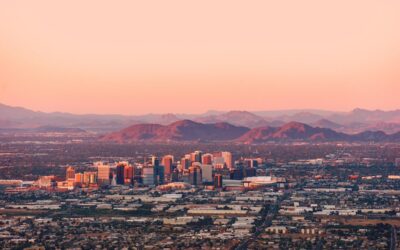
Alyssa Bickle cutting exterior siding with a circular saw. (Photo courtesy of AmeriCorps NCCC)
When I signed up to volunteer in affordable housing with AmeriCorps NCCC this summer, I didn’t know what to expect. Here’s what I learned.
This past June and July, right after graduating from college, I completed a summer of service with AmeriCorps National Civilian Community Corps (NCCC) where I volunteered with Habitat for Humanity of Greater Newburgh, in Newburgh, New York, for five weeks.
Over 350 service hours—and lots of construction work—later, my perspective on community resilience, revitalization, and America’s housing crisis has grown exponentially.
I gained a greater understanding of what affordable housing looks like for Newburgh, which does not mirror what each and every community across America needs.
Before my service, I covered housing affordability on and off for months as a journalism intern and always felt that simply writing stories about the issue wasn’t enough.
But, I was afraid of labeling myself as a “biased journalist” through taking part in any work to improve the affordability challenges communities face.
Despite that concern, I believe being a journalist doesn’t mean you have to sit on the sidelines and write about the struggles communities face from a detached perspective.
What is AmeriCorps?
AmeriCorps NCCC brings together young people from across the United States to tackle the country’s most pressing challenges, with one being addressing housing affordability.
I came into the program having no idea what state or city I would eventually be serving in, or what my living situation might look like.
After completing initial training in Vinton, Iowa, with my team, we loaded up into a 15-passenger van and drove across the country to Newburgh.
AmeriCorps places Corps members into communities that have identified a need that AmeriCorps NCCC can assist with.
Corps members live in the community they serve, and experience the day-to-day life and living conditions of everyone else who lives there.
Our old and creaky five-bedroom house, that sheltered nine people, was hot, humid, and cramped—but we had a roof over our heads.
The bunk bed I slept on had no sheets or a comforter, and it swayed like it would tip over every time I moved—but I had a bed to sleep in.
Our stove only had two working burners—but we had hot food and a full fridge every day.
Why Newburgh?
Newburgh is a relatively small community of about 30,000, located 60 miles north of Manhattan. Nearly half its residents are Hispanic/Latino and a quarter are Black.
Caribbean, Central, South and Latin American culture is abundant throughout the city.
To say that Newburgh has faced challenges would be an understatement.
The city has had a long history of racist housing practices, and the effects of gentrification are making its way through slowly but surely.
As a newcomer myself, it was easy to spot the gentrification, coming from the outside in—noticeable by hip coffee shops and bars, pilates shops, and upscale restaurants up and down Liberty Street.
The city’s successes that came from working class Americans were eventually torn down by promises of “urban renewal.”
Industry and factories left the city after World War II, taking jobs with them, and the construction of the I-84 highway in the 1950s redirected travelers around Newburgh, instead of through it, resulting in economic decline.
Urban renewal meant that the Newburgh Urban Renewal Agency took homes and businesses on the Hudson River waterfront away from their original owners and leveled the Eastern Historic District in the 1950s and 1960s, the Times Herald-Record reported.
Crack cocaine made its way to the streets of Newburgh, and gang activity and economic crises followed, leading to hundreds of abandoned buildings and the cycle of generational disenfranchisement repeated again.
In May 2010, over 100 alleged members of the Bloods and the Latin Kings gangs were indicted, according to New York Magazine.
In 2011, New York Magazine reported, “Despite its small size and bucolic setting, Newburgh occupies one of the most dangerous four-mile stretches in the northeastern United States.”
Now, a wave of gentrification is Newburgh’s seemingly biggest enemy, along with a lingering drug problem, according to the community.
Throughout the city’s history, Newburgh has been the catch all for people leaving New York City in search of a diverse, historical, urban center—and outsiders trying to “revitalize” it.
Now, artists and creatives priced out of the big city landing in Newburgh, drawn in by its history and struggle.
Connecting with the community
Through informal conversations with the community, my team learned what is important to them, what they struggle with, where they think the city is headed, what is in the way of progress, and what the city has been through.
The area’s perception of the gentrification differs across communities, from servers, Uber drivers, and our neighbors, to Habitat staff, volunteers and homeowners.
Some, who lived through Newburgh’s “dark days,” welcome it as an alternative to more drugs and crime. Others see it as a loss of the city’s culture, and the ousting of the original community.
Much of the Habitat Newburgh staff have spent most of their lives in the city and have seen it drastically change over the years—now, they are part of its revitalization.
Corey Allen, Habitat Newburgh’s neighborhood revitalization specialist and a Newburgh native, taught us about the difference between revitalization and gentrification.
He has lived in Newburgh his whole life, and taught my team about the history of the city—after all, it was his own descendents who experienced their homes and businesses being knocked down by the wrecking ball of “urban renewal.”
Revitalization is change made by or for the existing community, whereas gentrification comes from outsiders and newcomers, he told us.
Habitat Newburgh is revitalizing the city, selling homes to families at an affordable price and keeping people from Newburgh, in Newburgh—helping them find the opportunity to put down roots and reinvest in the community.
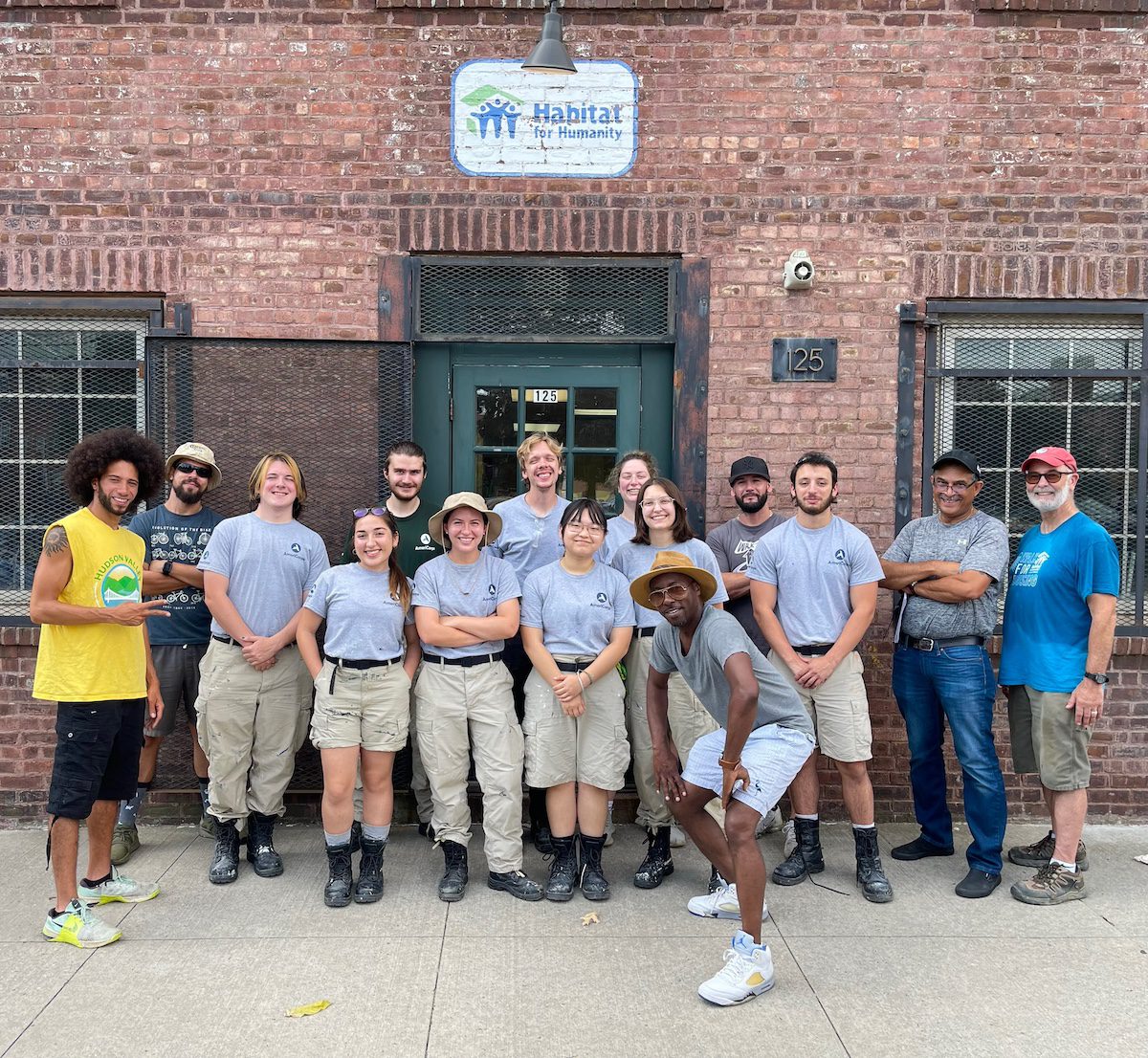
Alyssa Bickle’s team with Habitat Newburgh’s construction staff and volunteers. (Photo courtesy of Habitat Newburgh)
Over the span of the last 25 years, Habitat Newburgh has built and sold over 100 affordable homes to the community and has committed to strengthening generational wealth across racial, ethnic, cultural, economic, and religious boundaries.
The block my team lived on, East Parmenter, was Habitat Newburgh’s flagship revitalization project. From the outside, to some, it might seem gentrified, but each home has been sold at an affordable price to a Newburgh resident.
“This place used to look like fucking Baghdad,” Jason Rivera, a site specialist we worked with, who was born and raised in Newburgh, told us.
Newburgh is not an “up-and-coming city.” It has a deep-rooted community of generations, who have faced more hardships and struggles than many could even imagine. Children have been raised there, lives have been lived out, and many have been cut short.
In the end, I am not a spokesperson for Newburgh’s community. My experiences over five weeks do not even come close to mirroring what the community has endured for decades.
Even though I might have made a miniscule difference in the progress of the city, its community made a huge difference in mine. I saw community strength and resilience keep on the fight to change the trajectory of their neighbors.
Newburgh isn’t giving up on itself, or waiting for outside help—it’s fighting an uphill battle that’s often pushing back harder than they can shove it forward.
Even though there is a push to make change, many residents still have very individual goals rather than a commitment to collective progression—but this mentality comes from historic disinvestment in a community.
Our results
My team made every effort to avoid the mentality of being a “savior” to the community we served. As a team of just nine volunteers, who only worked a total of five weeks, I’m not here to say that we made momentous community change, or got dozens of families into affordable homes in the time we served.
We only worked for a few weeks, and we didn’t build any houses from scratch—but we still contributed to a common goal of community revitalization and affordable housing construction.
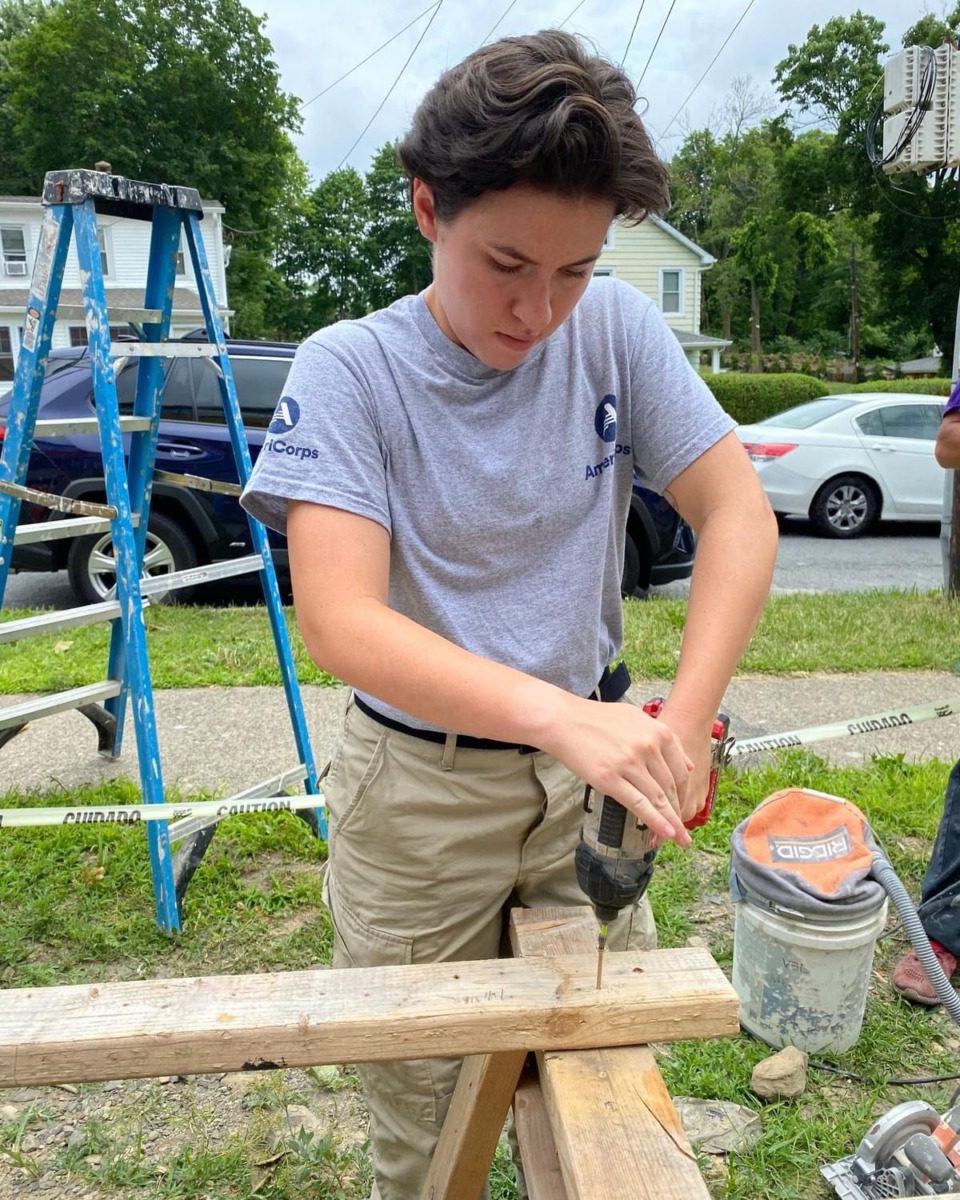
Alyssa Bickle setting up to measure and cut exterior siding on a construction site. (Photo courtesy of AmeriCorps NCCC)
My team of nine helped with the construction of two duplexes by cutting and installing exterior siding, installing insulation, painting with primer, and fire blocking, while assisting in the finishing stages of a second site.
At Habitat Newburgh’s headquarters, we remodeled a bathroom, refinished an office floor and installed trim, and constructed new storage fencing.
Navigating some of the challenges that Newburgh residents face day to day provided us with the opportunity to learn about a new environment and culture.
I am so grateful for the trust that the community placed in my team and the overwhelming amount of patience Habitat Newburgh staff had with us as we learned construction processes.
READ MORE: Apache Boulevard is rapidly changing: Here’s where affordable housing fits in
Support Our Cause
Thank you for taking the time to read our work. Before you go, we hope you'll consider supporting our values-driven journalism, which has always strived to make clear what's really at stake for Arizonans and our future.
Since day one, our goal here at The Copper Courier has always been to empower people across the state with fact-based news and information. We believe that when people are armed with knowledge about what's happening in their local, state, and federal governments—including who is working on their behalf and who is actively trying to block efforts aimed at improving the daily lives of Arizona families—they will be inspired to become civically engaged.

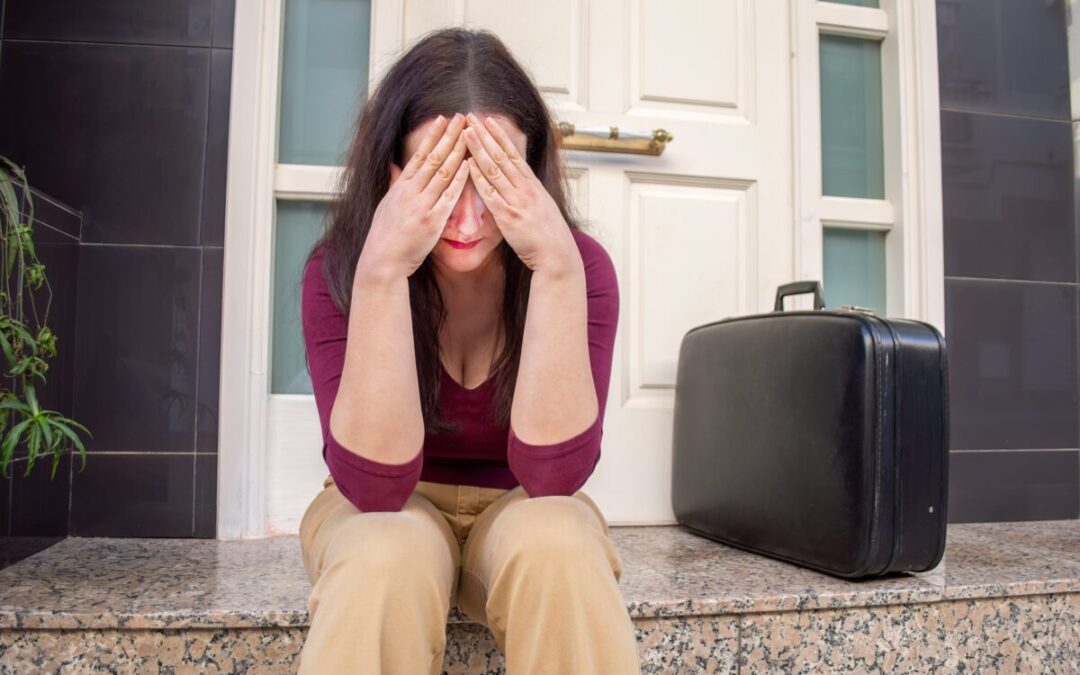
Tips on how to avoid rental scams in Phoenix
If you’re searching for a place to rent, you should be aware of rental scams. Many people looking for a quick buck will make up a listing, make a...

The 4 best areas to rent in Phoenix if you don’t have a car
Although Phoenix isn’t known for being a truly walkable city like New York City or San Francisco, pockets of the Valley of the Sun are walkable. If...

Want to peek inside Phoenix’s historic homes? This tour is for you
The F.Q. Story Historic Neighborhood has been hosting the Home Tour and Holiday Street Marketplace for 38 years, allowing the community to...
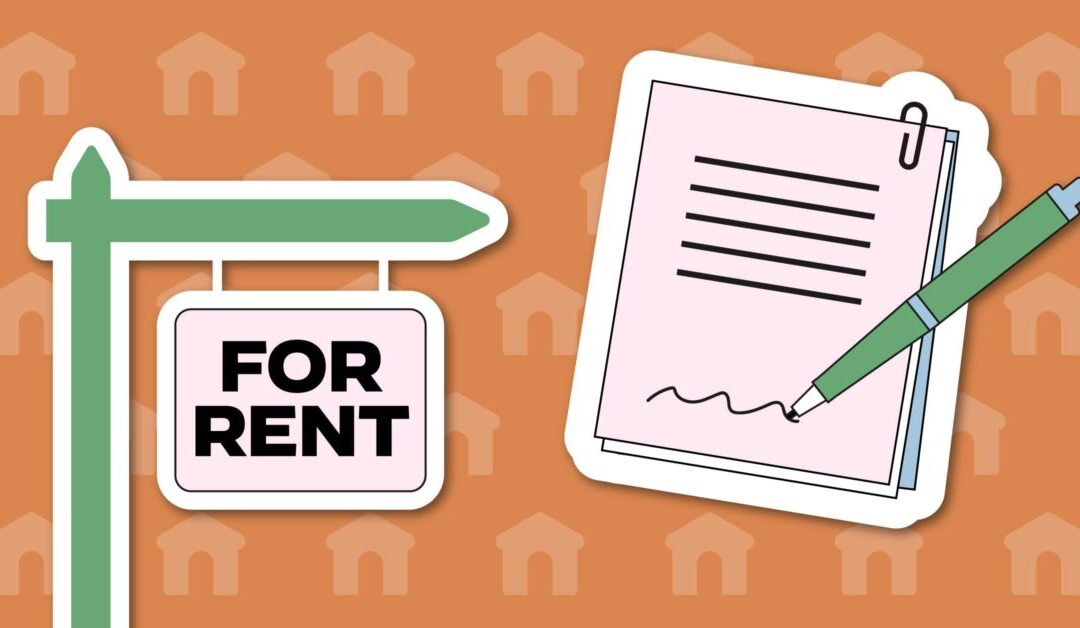
Window shopping: Interesting rental listings we found in Phoenix this week (Dec. 3)
Are you looking for a new rental in Phoenix? Here are some interesting listings we found this week. This section appears in Rent Check PHX, a...




